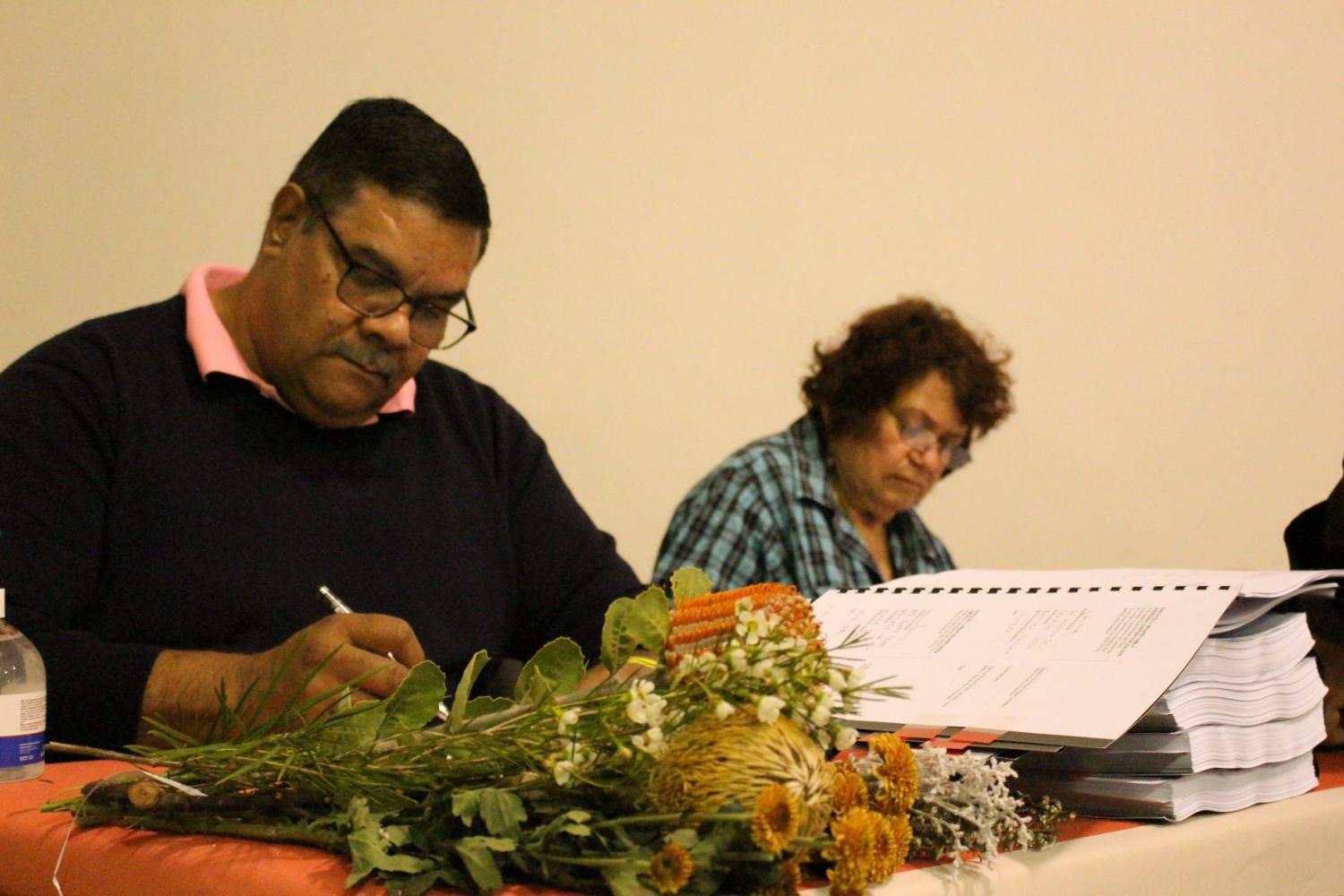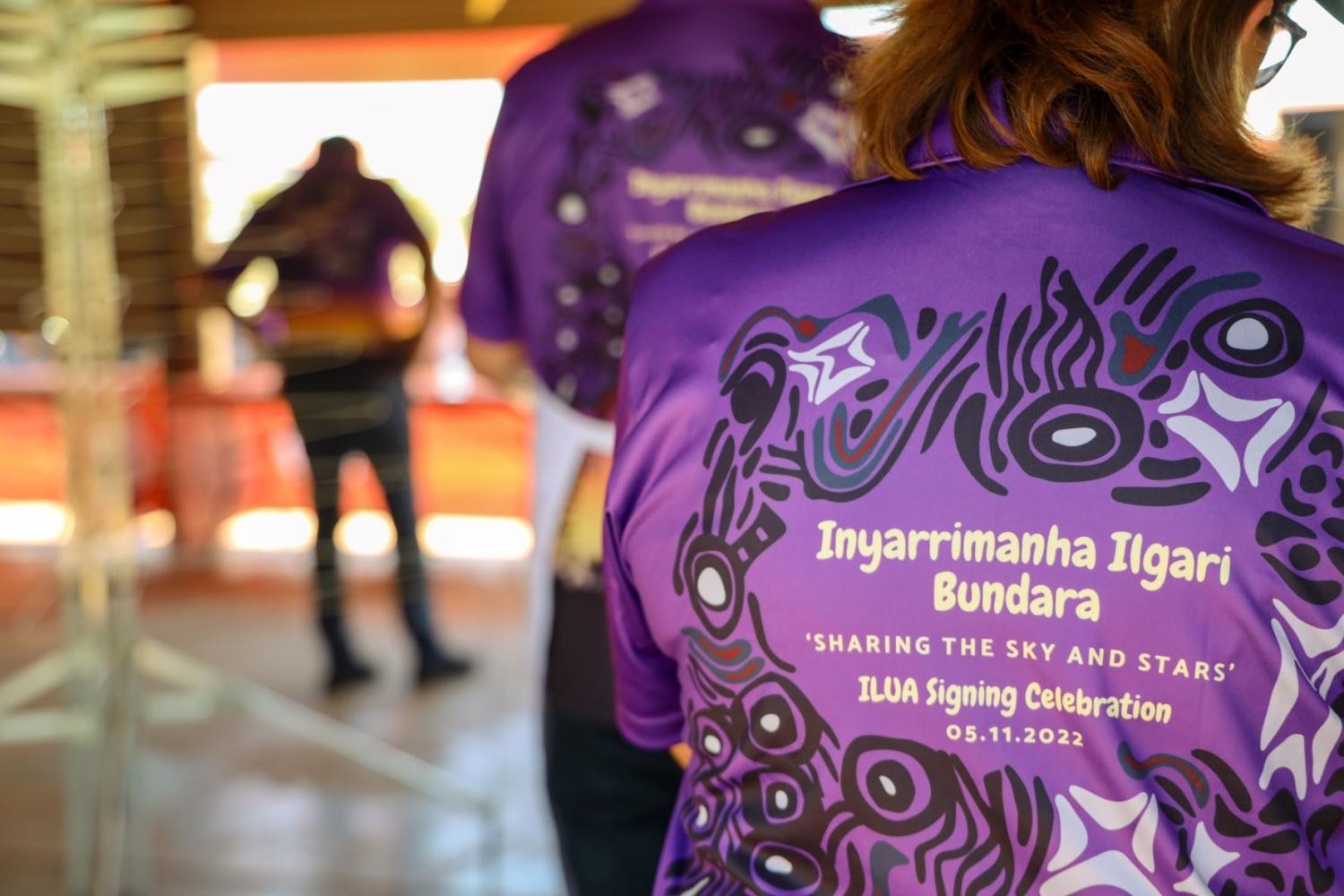Land agreement with native title holders celebrated as key milestone for SKA-Low telescope
The land agreement was negotiated and signed by the Wajarri Yamaji, together with the Australian and Western Australian governments, and the country’s national science agency CSIRO. It ensures that Wajarri Yamaji cultural heritage will be protected and that they will receive sustainable and intergenerational benefits in areas such as enterprise and training and education. CSIRO will manage the agreement in partnership with the Wajarri Yamaji.
The Wajarri celebrated the registration of the agreement on Saturday 5 November 2022 on Wajarri Country. The event was attended by Wajarri community members as well as representatives from the Australian and Western Australian governments, CSIRO, and the SKA Observatory, including SKA-Low Telescope Director Dr Sarah Pearce and Site Construction Director Antony Schinckel.
Schinckel said the agreement was a historic step for the SKA project. “This is a significant milestone toward the start of on-site construction activities of Australia’s SKA telescope, SKA-Low.
“We are honoured to have this unique opportunity to deliver a cutting-edge telescope on the lands of some of the world’s first astronomers, and look forward to continuing this successful partnership with the Wajarri going forward.”
Dr Pearce said she was looking forward to working in collaboration with the Wajarri Yamaji as the SKAO builds and operates its low frequency telescope array.
“We are truly grateful to the Wajarri Yamaji for their support of the project and their consent to start construction,” she said.

Protecting and preserving culture
Over the past five years, about 400 km of ground has been surveyed to ensure Wajarri heritage is protected. Based on these results, the layout of the SKA telescope array was amended to avoid significant heritage sites.
Minangu Land Committee member Dwayne Mallard said the observatory would have a light footprint on the land and would combine ancient culture with modern science to create mutual benefit.
“We are born into the responsibility and obligation to preserve, protect, and maintain dignity of our land, culture, and people,” Mallard said.
“My good friend Shane Howard sings 'you look into the heart of the land, and you have to choose whether the wealth we gain is worth the wealth we lose'. I don't think we've lost anything here, and that's very important.”

New site name
At the event, the Wajarri Yamaji announced the gift of a traditional name for the expanded observatory site – Inyarrimanha Ilgari Bundara.
The traditional name was suggested by Wajarri woman Shakira Whitehurst for a competition run by the Wajarri Yamaji Aboriginal Corporation (WYAC). Members of the Wajarri Minangu Land Committee, the traditional owners of the observatory area on Wajarri Country, selected the new name. It will be used as part of a dual name for the observatory – Inyarrimanha Ilgari Bundara, the CSIRO Murchison Radio-astronomy Observatory.
Chairperson of WYAC and Minangu Land Committee member Jennylynn Hamlett said the name meant “sharing sky and stars” in Wajarri language.
“We look at the sky every day, and we now have the opportunity to share our skies with the rest of the world. This Wajarri name connects our culture and language to what our Country is being used for,” Hamlett said.
The SKA-Low telescope will be hosted in the remote and radio-quiet Murchison area of Western Australia. Together with the SKA-Mid telescope, to be built in the Karoo region of South Africa, the two telescopes will explore the Universe in more detail than ever before and benefit society through global collaboration and innovation.
Read the CSIRO media release and a joint release by the Australian and Western Australian governments.




